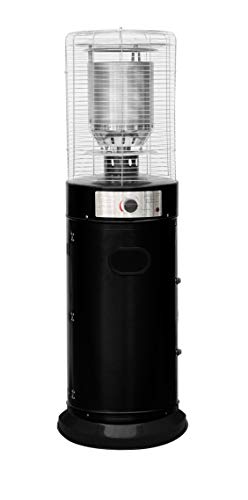How To Save Money On Buy Gas Radiant Heaters
Buying Gas Radiant Heaters: A Comprehensive Guide
Gas radiant heaters have actually gained appeal in the last few years for their effectiveness and ability to supply immediate warmth. As more property owners and businesses look for ways to keep their areas comfortable, comprehending the features, benefits, and considerations when purchasing these heating systems can be really helpful. This short article looks into the intricacies of gas radiant heaters, assisting potential buyers in making informed choices.
What are Gas Radiant Heaters?
Gas radiant heaters are gadgets that make use of propane or natural gas to produce heat straight into a room. Instead of heating Outdoor Ambiance , they warm objects and people in their area, offering convenience quicker and efficiently. These heaters are popular for both indoor and outdoor settings due to their adaptability and efficiency.
Key Features of Gas Radiant Heaters
- Direct Heating: Unlike conventional heaters that warm the air, gas radiant heaters offer direct warmth, making them an efficient choice for quickly heating up areas.
- Mobility: Many models are offered as portable systems, enabling them to be quickly moved from one area to another.
- Fuel Variety: Gas radiant heaters can be powered by natural gas or propane, giving users flexibility based upon availability and choice.
- Adjustable Settings: Most gas radiant heaters featured adjustable heat settings, permitting users to customize the level of heat based on their requirements.
Benefits of Gas Radiant Heaters
- Energy Efficiency: These heaters convert gas into heat effectively, resulting in lower energy expenses compared to electric heaters.
- Quick Heating: Radiant heat is felt practically instantly, making these heaters ideal for sudden temperature level drops.
- Low Maintenance: Gas radiant heaters normally need less upkeep than electric designs, making them a hassle-free alternative.
- Eco-friendly: When powered by clean gas, these heaters can be a more environmentally sustainable choice compared to other heating methods.
Kinds Of Gas Radiant Heaters
When it concerns picking a gas radiant heater, it's necessary to understand the various types offered. Below are the most typical options:
- Indoor Gas Radiant Heaters: Designed for indoor areas, these heaters are normally vented or unvented and typically featured integrated safety features.
- Outdoor Gas Radiant Heaters: Commonly used in patio areas or outdoor dining areas, these heaters are designed to stand up to the aspects.
- Wall-Mounted Gas Radiant Heaters: A space-saving alternative, these systems are perfect for smaller areas and can be outfitted with various heat outputs depending on the area's needs.
- Freestanding Gas Radiant Heaters: These portable models can be utilized in different locations, best for those who need versatility.
Purchasing Guide: How to Choose the Right Gas Radiant Heater
When purchasing a gas radiant heater, a number of elements must be considered to ensure you choose the right design for your space:
1. Heating Capacity
- Determined in BTUs (British Thermal Units), the heater's capability determines just how much area it can successfully warm. Buyers ought to examine their particular needs based on room size.
Room Size (sq feet)
Recommended BTUs (for Gas Radiant Heaters)
100 – 200
5,000 – 10,000 BTUs
200 – 400
10,000 – 20,000 BTUs
400 – 600
20,000 – 30,000 BTUs
600 – 800
30,000+ BTUs
2. Kind of Gas
- Consider whether you will be utilizing propane or natural gas, as various heaters accommodate various fuel types.
3. Security Features
- Look for designs geared up with safety features such as automatic shut-off valves, tip-over security, and oxygen exhaustion sensors.
4. Setup Requirements
- Some heaters may require professional installation, especially vented models. Make certain to consider the costs and requirements associated with setup.
5. Portability
- If flexibility is vital, consider portable designs that can be easily moved from one location to another.
Setup and Maintenance
Gas radiant heaters are usually uncomplicated to install, especially portable models. Nevertheless, vented options might require professional installation to ensure they satisfy regional security codes.
Maintenance normally involves:
- Regular cleansing to avoid dust accumulation.
- Inspecting gas connections and fittings for leaks.
- Guaranteeing safety features are practical.
Idea: Regular checks around the system can assist extend its lifespan and keep security.
Frequently Asked Questions (FAQs)
Q1: Are gas radiant heaters safe for indoor use?A1: Yes
, as long as they are effectively vented and equipped with necessary security functions, they can be securely used indoors.
**Q2: Can gas radiant heaters be used in enclosed spaces?A2: Unvented gas heaters can posture dangers in enclosed spaces due to prospective suffocation or carbon monoxide accumulation. Always ensure adequate ventilation. Q3: How do I understand what size heater I need?A3: The appropriate size depends on the location you plan to heat. Refer to the BTU chart
above to determine your needs. Q4: What is the distinction between propane and natural gas heaters?A4: The primary distinction lies in their energy source
**; propane is delivered by means of tanks, while natural gas is normally piped into homes. Q5: How can I optimize efficiency?A5: Ensure the heater is properly sized for your space, keep it routinely, and consider using it in mix
**with other heating techniques for maximum convenience. Gas radiant heaters can be a fantastic addition to any home or business, providing energy-efficient and quick heating solutions. By understanding the various types, features, and factors to consider
when buying, buyers can make informed decisions that satisfy their heating requires. With the ideal option, these heaters provide convenience, dependability, and an inviting environment throughout colder seasons.  ******
******